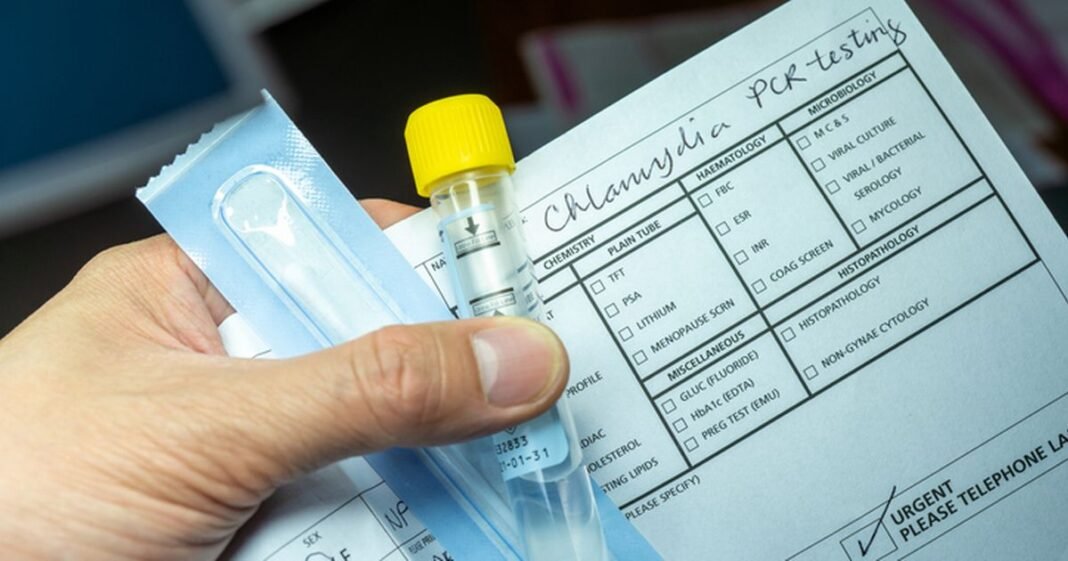STDs on the rise across the UK as Gen Z increasingly refuse to wear condoms
It turns out the UK has a new epidemic – and it’s affecting our genitals. STDs have officially made an unwanted comeback post-pandemic and their numbers are soaring. According to UK government data, cases of gonorrhoea have risen by 7.5%. Strikingly, syphilis has increased overall by 9.4%, with a troubling surge of 21.8% among heterosexual couples.
While chlamydia cases appear to have remained stable, the 2.1% drop in screenings may be making that number appear lower than it truly is. Even worse, when looking specifically at 15 to 24-year-olds, the proportion screened for chlamydia decreased from 27% in 2012 to 14.5% in 2023.
So, what’s causing this concerning hike? According to Susan Allen-Augustin, safe sex advocate and co-founder of the vegan condom brand XO! By Flo, the reason likely lies in the fact that people aren’t wrapping up. According to Durex’s Global Sex Survey, a meagre 15% of the UK bought condoms between 2023 and 2024.
According to the World Health Organisation, there has been an “alarming” decline in adolescents using physical contraceptive. Based on a survey conducted across 42 countries, almost a third of 15-year-olds reported using neither a condom nor a contraceptive pill the last time they were sexually active.
Susan further explains: “Reduced testing, combined with lower condom use, HIV combination prevention (including PrEP), and the increased use of long-acting reversible contraception (LARC) for unplanned pregnancies, are likely contributing to this rise in STIs.”
So what are people using instead? Between 2021 and 2023, the percentage of women using long-acting reversible contraception (like IUDs or the hormonal implant) jumped from 25% to 55% – a massive increase. However, as Susan highlights, this can be an issue when it comes to STDs.
It initially sounds counterintuitive – at least people are using some form of contraceptive, right? But the problem lies in the fact that while hormonal contraceptives are great at preventing pregnancy, they do little to ward against the likes of chlamydia or gonorrhoea, which are passed through bodily fluids.
Equally worrying, the popularity of PREP also poses a threat. While the antiretroviral medication decreases the likelihood of contracting HIV, it doesn’t do anything to stop other kinds of STDs – which can be just as deadly if left untreated. Syphilis, which has seen one of the highest spikes, can lead to serious complications like dementia and heart failure.
As it stands, the most effective method of STI prevention is by using a physical contraceptive. “As a society, we can’t ignore the importance of consistent prevention – condoms are still one of the most effective ways to protect ourselves and our communities,” Susan emphasises. According to the World Health Organisation, condoms are 98% effective at preventing disease when used correctly.
But if that’s the case, why are more of us absconding the tried-and-true latex barrier? Well, aside from the growing reliance on chemical contraceptives, another major reason that’s been highlighted is that their sparse usage in porn has left many younger people unwilling to buy them. In fact, sex educators have noted that there has been a worrying decline in Gen Z purchasing condoms out of shame and embarrassment.
This mixed messaging has also fed into a damaging moralising attitude around who contracts an STI and who doesn’t. Sex therapist Evie Plumb reveals that she’s noticed a growing attitude among younger people thinking that they don’t need to use physical contraceptive because they’re “clean”. “We’re obsessed with clean and dirty,” she says.
There’s a prevalent misconception among many that STIs only happen to people who engage in promiscuous or risky sexual behaviour, or who are otherwise unhygienic. But this stereotype isn’t just untrue, it’s also dangerous. Many STIs, like chlamydia, can be symptomless, meaning they’re impossible to detect based on appearance alone.
It does seem like a step backwards. But Shakira Scott, founder of the sex education workshop Scotty Unfamous, suggests that this growing attitude may tie into a more general cultural shift towards conservative values. With MAGA reigning in the US, there has been a push for more traditional social mores, which unfortunately includes a lowered emphasis on sex education. For example, Trump’s Project 2025 is calling for a drastic reduction in federal sex education funding.
Meanwhile, it is becoming harder to discuss safe sex online. In 2024, research by the campaign group CensHERship found that content promoting sexual health was being incorrectly taken down on platforms such as Instagram, Facebook and TikTok. They also found that of the accounts surveyed that shared women’s health content nine out of 10 accounts had experienced some form of censorship in the last year.
Don’t miss resident agony aunt Coleen Nolan’s weekly newsletter

